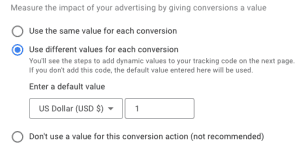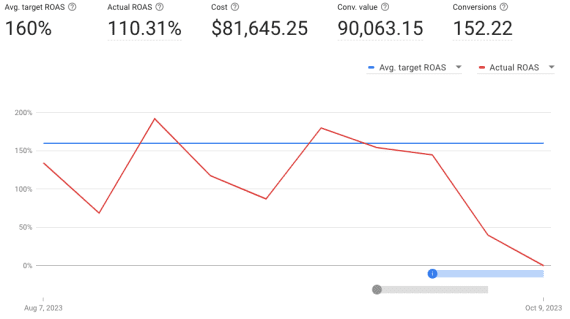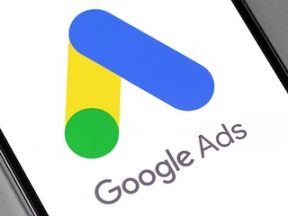Three years ago I addressed Google Ads bid strategies. The post described each strategy, including the pros and cons. Though some strategies remain, automated bidding has changed.
Automated bidding works best with values. Every conversion action, from a purchase to a form submission, should have a value. Google can optimize for conversions, but without a value those conversions may not be the most profitable for advertisers. For example, a purchase is presumably more valuable than an email signup. But a campaign optimizing for both could result in more signups than purchases.
Every campaign should target just one conversion point. For ecommerce, that tends to be purchases, though softer conversions such as signups aid top-of-funnel campaigns.
Regardless, designate the goal in the Google Ads campaign settings tab. For purchases, it’s “Revenue.” No matter the bid strategy, Google will optimize to the desired goal.
Setting Up Conversion Values
Conversion values in Google Ads are dynamic or static. Dynamic is best for purchases. It requires adjusted conversion codes to track each product’s ad costs and revenue. B2B advertisers often import offline conversion values as the sale process can be lengthy.
The value of form submissions can be tiered — important conversions have higher hypothetical values, such as:
- Contact us: 60.
- Demo request: 40.
- Email signup: 20.
A “maximize conversion value” bid strategy will optimize value instead of volume. Traffic may be less because Google targets users likely to complete the higher value conversion.
Nonetheless, some advertisers prefer conversion volume to acquire top-of-funnel customers for repeat sales. Google’s “conversion value rules” allow advertisers to adjust values by audiences, locations, devices, and more.
Regardless, a bid strategy of “maximize conversion value” facilitates using “target return on ad spend” (tROAS). A tROAS bid strategy is the best way to optimize for profit instead of conversions or revenue.
Google defines tROAS as Conversion Value ÷ Spend. If revenue is $200 and ad spend is $100, the tROAS is 200%. Google’s formula differs from a common ROAS calculation of (Revenue – Cost) ÷ Cost.
Climbing the tROAS Ladder
Consider automated bidding as a ladder wherein each progressive step is more targeted.
- First step: Manual cost-per-click bidding without considering searchers’ signals. Inefficient.
- Second step: Enhanced CPC bidding with manual bids but allowing Google to adjust for likely conversions.
- Third step: Maximize conversion value bidding, where Google controls all bids based on the searchers likely to convert at a higher value.
- Fourth step: Maximize conversion value bidding with tROAS. Google controls all bidding based on the searchers likely to convert at a higher value and the advertiser’s desired return on ad spend.
The goal is to reach the top step for tROAS bidding. A tROAS portfolio bid strategy — i.e., for multiple campaigns — can chart performance over time.
Long-term Success
Keep conversion lags in mind for any bid strategy, including tROAS. If conversions generally take seven days from the first click to purchase, exclude the most recent seven days of data when evaluating the strategy.
In short, value-based bidding is the key to long-term Google Ads success. It provides advertisers and Google with a clear priority for each conversion.







